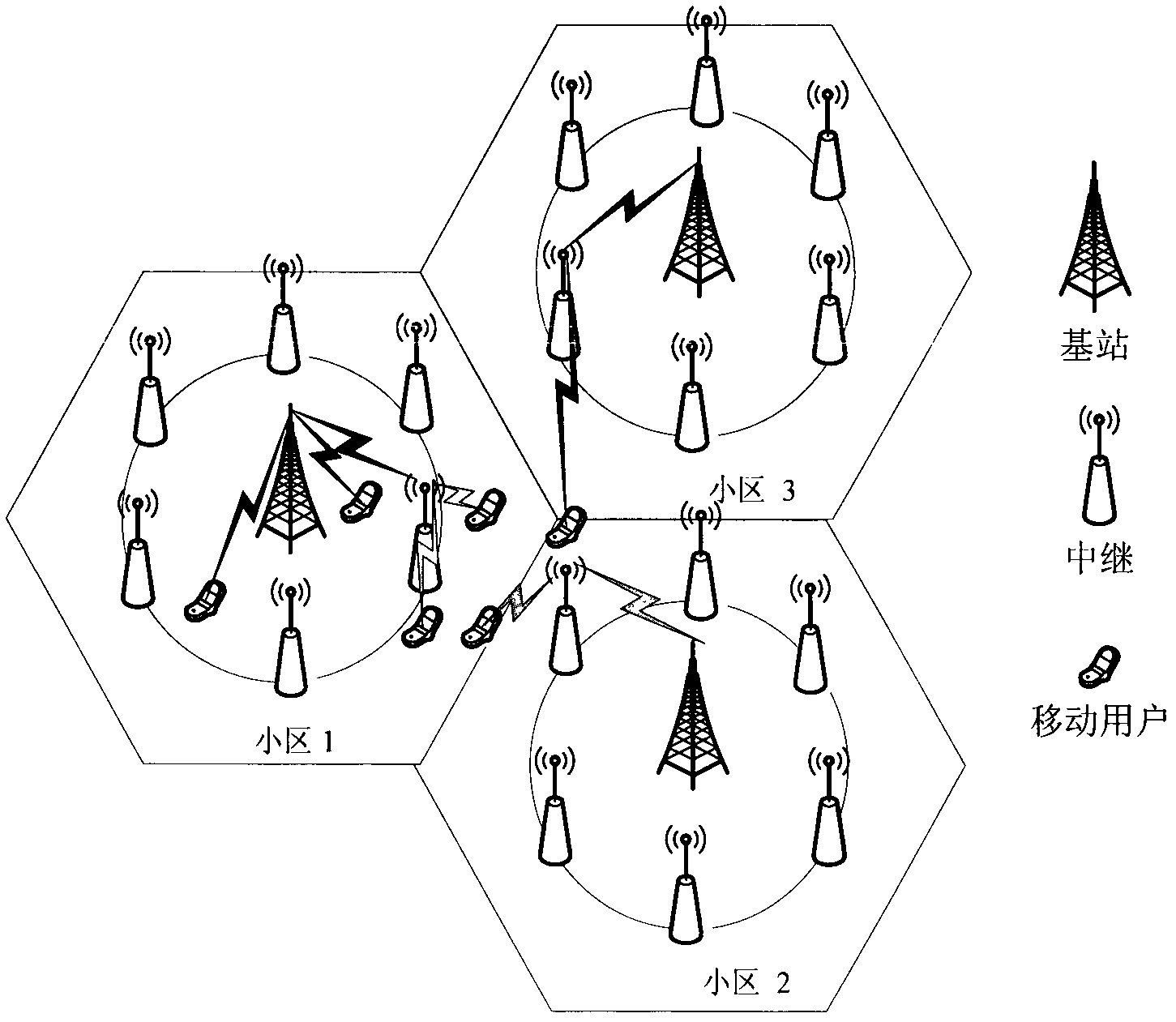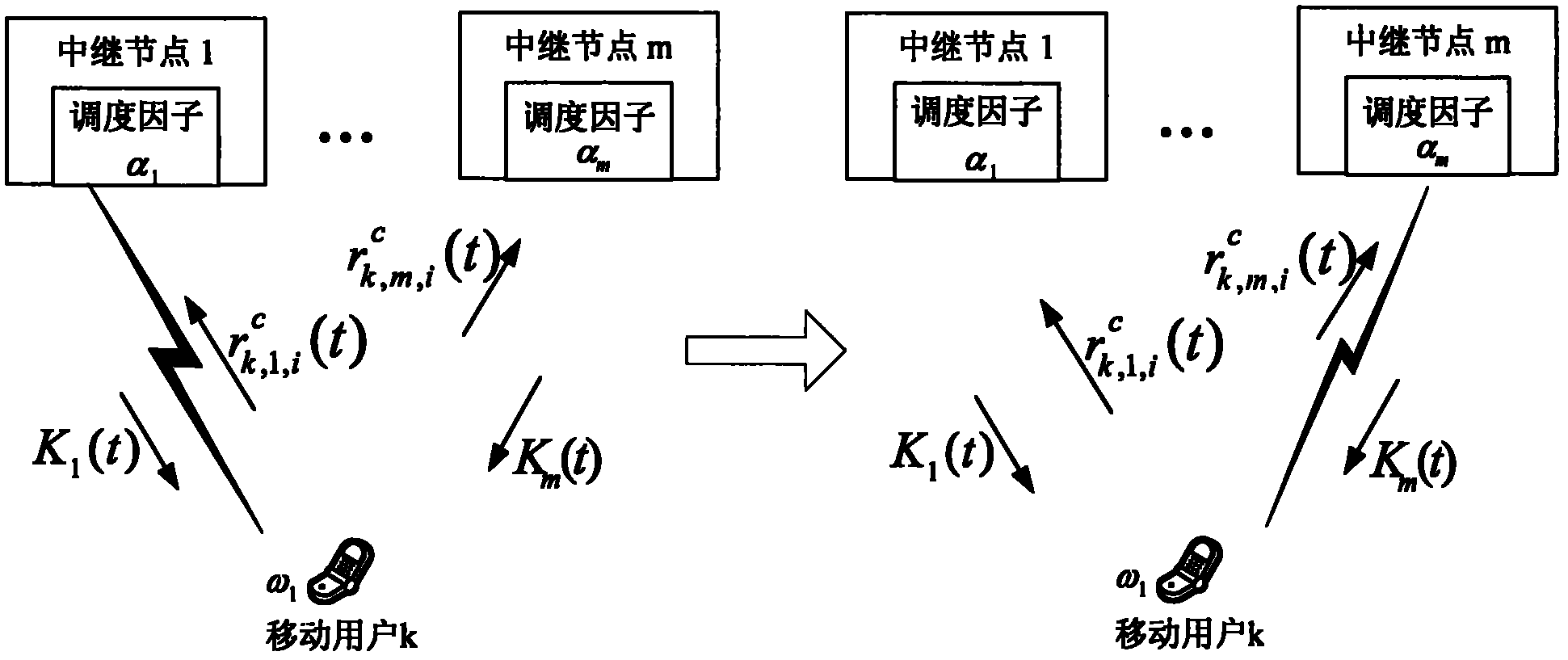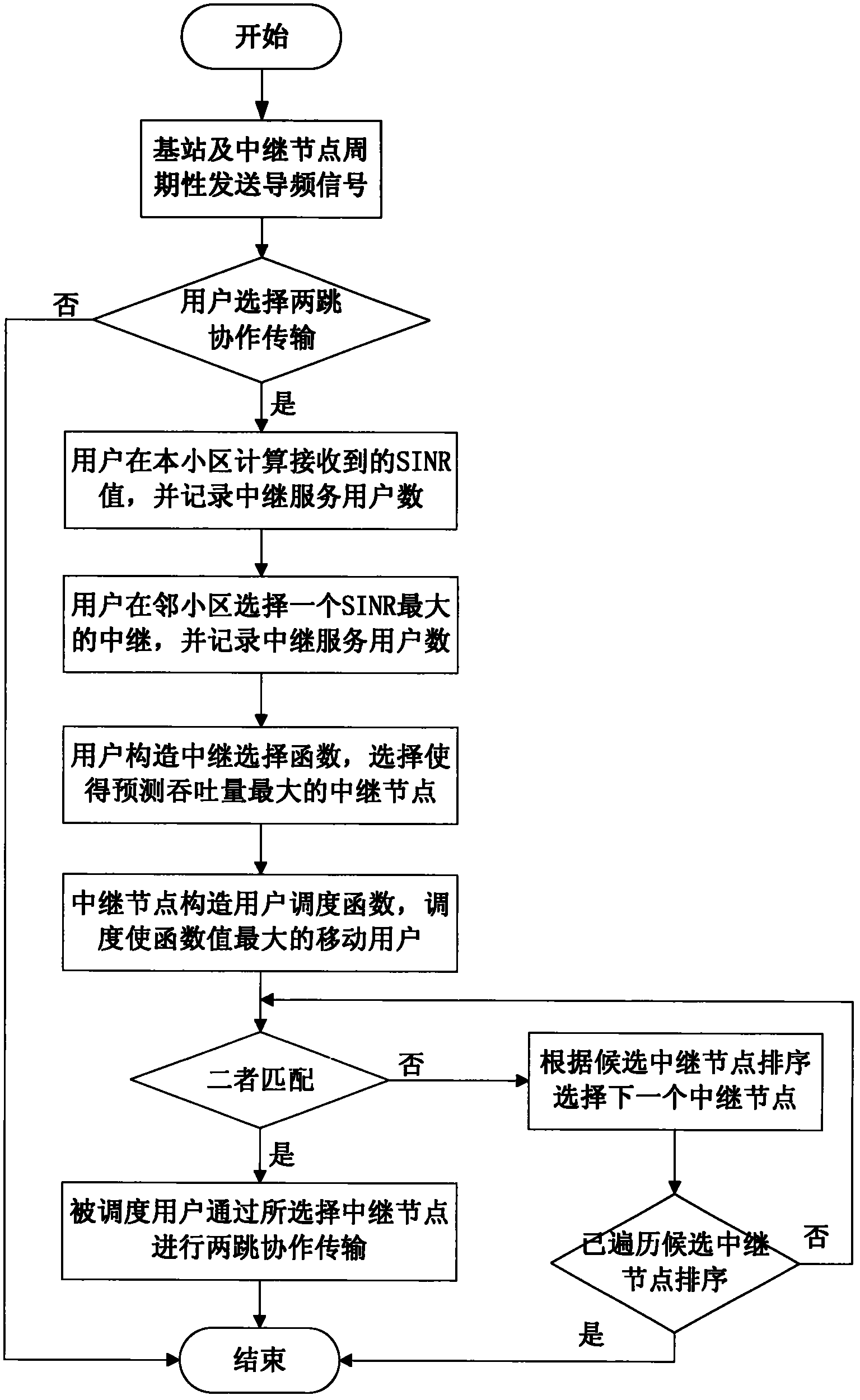Relay selection method based on load balancing in cooperation relay network
A load balancing and cooperative relay technology, applied in access restriction, electrical components, wireless communication, etc., can solve problems such as unbalanced user service distribution, and achieve the effect of improving overall performance and simplifying the calculation process.
- Summary
- Abstract
- Description
- Claims
- Application Information
AI Technical Summary
Problems solved by technology
Method used
Image
Examples
Embodiment 1
[0037] The present invention is a relay selection method based on load balancing in a cooperative relay network. In the following description, it is assumed that the system adopts OFDMA physical layer technology. Such as figure 1 As shown, it is assumed that the system has M cellular cells, and 6 relay nodes (Relay Node, RN) are uniformly arranged in each cell. The relay node is located at 2 / 3 of the cell radius. The available bandwidth in each cell is B, which is divided into N orthogonal sub-channels. It is assumed that the system is in a working state of flat fading, so that both a mobile user (Mobile User, MS) and a relay node in a cell can obtain complete channel state information (CSI). According to the received base station (Base Station, BS) and the pilot signal strength transmitted by the relay node, the mobile user calculates the CSI from the user to the relay node and from the user to the base station respectively, so as to determine the method of direct transmiss...
Embodiment 2
[0052] The relay selection method based on load balancing in the collaborative relay network is the same as that in Embodiment 1, and the following is combined with the attached image 3 And the specific calculation details the realization of the present invention.
[0053] According to the node selection method based on load balancing proposed by the present invention,
[0054] In the first step, the base station in each cell and the six relay nodes in the cell periodically send pilot signals, where the pilot signal sent by the relay node includes the number of mobile users it serves in the current time slot.
[0055] In the second step, the mobile user who chooses to use two hops to access the base station first calculates the SINR value of the signal received from the base station and the SINR value of the received relay signal according to the strength of the pilot signal received from the base station and the relay node. For user k in the cell, the SINR of the three link...
Embodiment 3
[0080] The relay selection method based on load balancing in the collaborative relay network is the same as that in Embodiment 1-2, see figure 2 , the work of the present invention is briefly described as follows, assuming that mobile user k located in cell i respectively receives pilot signals from relay node 1 to relay node m, and then calculates the two-hop transmission achievable rate of selecting different candidate relay nodes And get the number of service users K of the relay node 1 (t)...K m (t), according to the proposed relay selection method based on load balancing, see figure 2 As shown in the left part of , user k first establishes a candidate relay selection list based on the relay selection function constructed in the fourth step above, and selects relay node 1 as its serving relay node; secondly, combined with user k’s Weighting factor ω k and the scheduling factor α of different relay nodes 1 ...α m , the relay node respectively constructs the user sch...
PUM
 Login to View More
Login to View More Abstract
Description
Claims
Application Information
 Login to View More
Login to View More - R&D
- Intellectual Property
- Life Sciences
- Materials
- Tech Scout
- Unparalleled Data Quality
- Higher Quality Content
- 60% Fewer Hallucinations
Browse by: Latest US Patents, China's latest patents, Technical Efficacy Thesaurus, Application Domain, Technology Topic, Popular Technical Reports.
© 2025 PatSnap. All rights reserved.Legal|Privacy policy|Modern Slavery Act Transparency Statement|Sitemap|About US| Contact US: help@patsnap.com



